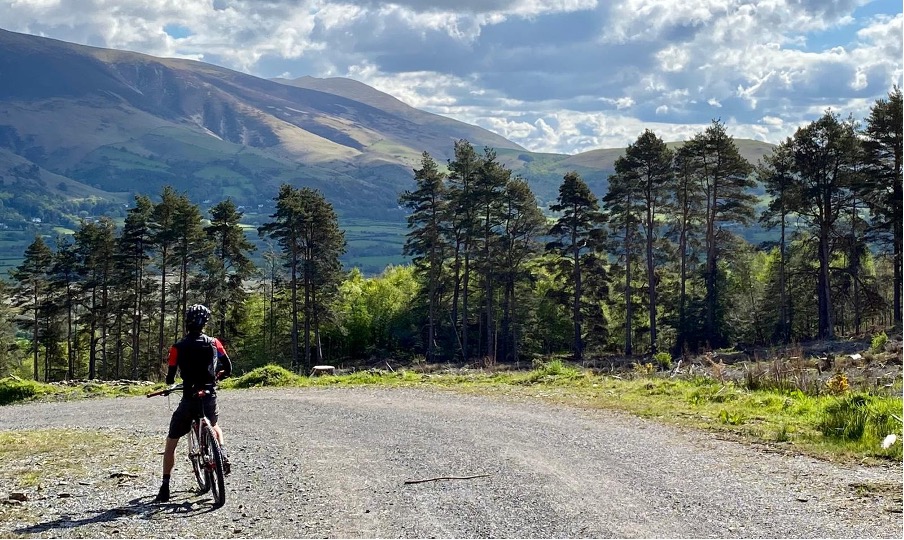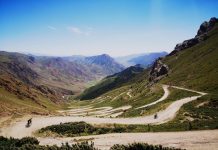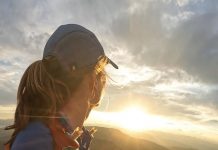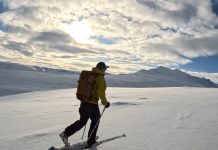LOVE BIKE PACKING? HOW ABOUT TAKING ON A TWO WEEK, 2500 KM ADVENTURE ACROSS THE UK?
Having spent much of lockdown run-training for events that didn’t happen, I impulsively signed up to a self-support ultra-endurance cycling event. Mostly off-road, the 2500km of Great British Divide winds its way up from Canterbury to the Isle of Skye, finishing over the Bealach na Bà in Applecross.
I entered the event late giving me only 10 weeks to train and prepare for the event. This blog will give you an insight into the different elements of my training, provided by E3Coach.
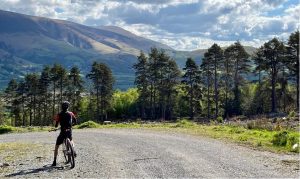
But before we kick off, I’ll do a quick introduction. Of course, I’m not entering this ‘blind’. Riding 120+ miles, off-road, for 10-14 days straight is no small feat, even for a weathered cyclist.
I’m Andy, 28 years old and consider myself as a cyclist before anything else, but not quite a weathered cyclist. Yet. I’ve spent the last 10 years mostly cycling but also some focus on running and triathlon. In each discipline I’ve always leaned towards endurance, whether be spending the day riding from the Midlands to Exmoor, or waking up and deciding to run a double marathon to complete the 52-mile Derby Nomad Way! Though, in the last few years, I’ve shifted my cycling focus to off-road and bikepacking. I’ve enjoyed the exploration element to riding off-road and since then I’ve been on a number of bikepacking adventures, most notably Tour du Mont Blanc (an attempt of) and the King Alfred’s Way. But still, none of these quite match the distance or duration of this event. It will certainly still be a challenge.
Training
People often take ‘training’ as spending time on the bike, but I believe there is so much more.
Physical fitness
I think most obviously, getting to a good level of fitness through racking up time in the saddle is the best form of training you can do. There is nothing better for getting used to long days turning your pedals than getting out and doing it. These ‘base miles’ are a great way to prepare for any endurance event, and it’s what most riders do over winter to keep ‘ticking over’. Riding the same route to and from work, if anyone actually goes to the office now, to regular virtual sessions. All these miles help the legs, and your backside!
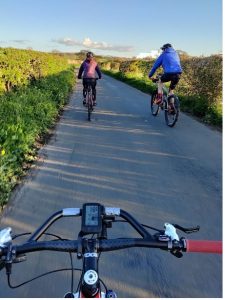

But physical fitness doesn’t stop there. As I said, the base miles are great, but they work far better in conjunction with a few different training sessions. Bikepacking is very different from a road sportive – your bike is loaded up with kit, you’re often tackling rough terrain and will regularly find yourself spending time pushing your bike instead of riding it. This takes some toll on the muscles less used during ‘usual’ cycling, and so although it’s desirable to avoid these situations, it’s great to practice them.
Fortunately for me, I have a great local woodland with many fallen trees. I found this 1km cross country style trail that crosses about 10-15 fallen trees. I hated my first loop of it, vowing never to make that wrong turn again, but now I actually choose to take that turn. It makes for a perfect addition to any training ride to build up the technique for getting loaded bikes over obstacles.
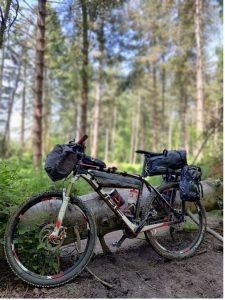
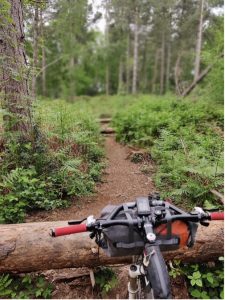 While endurance events like this don’t often call for your heart rate to get too high unlike in races, sometimes lugging yourself and all your gear up steep technical climbs gets the blood flowing a bit more. It’s important that your body is used to this and you know how to recover quickly so you don’t drain your energy reserves. After all, you’ll then have to carry more snacks which equates to more weight to lug up those hills or over obstacles. To do this, I ride a variety of hill sessions that focus on recovery while riding, for instance:
While endurance events like this don’t often call for your heart rate to get too high unlike in races, sometimes lugging yourself and all your gear up steep technical climbs gets the blood flowing a bit more. It’s important that your body is used to this and you know how to recover quickly so you don’t drain your energy reserves. After all, you’ll then have to carry more snacks which equates to more weight to lug up those hills or over obstacles. To do this, I ride a variety of hill sessions that focus on recovery while riding, for instance:
- Mixing efforts on a climb, or
- Changing riding position on a climb.
Getting the hill and sprint sessions in to stimulate different muscle groups helps your body to operate at higher heart rates more effectively and build strength quickly. Supplementary core and strength sessions work well too to build muscle in the key areas.
But in endurance events, your physical fitness will only get you so far. You need a strong mind game to push through pain barriers, to get back on after a fall, and to not scratch (retire) when you’ve had that mechanical issue in the middle of the night in the pouring rain.
Mental fitness
Physical fitness is greatly boosted by knowing (or believing) you have the physical ability to do it. By maintaining a cool head when things are going wrong. By overcoming the internal battles you inevitably have over the course of an ultra-endurance event. But how do you train your mind? I can honestly say I’ve never intentionally split my tyre in torrential rain after sun-down in the name of training, but I do regularly start hill rep sessions after dark, in the rain and when I’m super tired. It’s difficult to find motivation to do these, but choosing to leave the comfort of your sofa to go out in the rain is a lot more difficult than ending up in it!
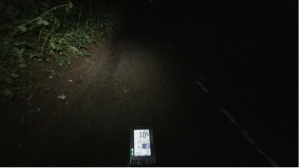
Gear Familiarity
Another part of training that is greatly overlooked is training with your gear. Getting out and testing your gear is paramount. Familiarity can be improved through some alternative training sessions, such as virtual bikepack reps. I’ve completed a number of sessions riding for a short period of time, jump off and set up the bivvy, pack it all back up and jump back on the bike, repeating until the session has finished. This is a great session for many reasons, but mostly because setting up a bivvy will be the activity you’ll be doing when you’re most tired after a full day (or more) of cycling. Having this process stored in muscle memory helps no end when the simplest of tasks take all your brain power. I also regularly do bivvy setups mid ride to ‘test’ myself.
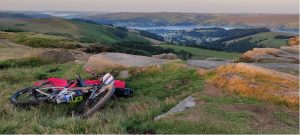
Another useful practice is to stop and simulate a breakdown or a bike check. This familiarises you with the hex keys needed to do specific jobs – removing wheels, tightening racks, changing brake pads etc.
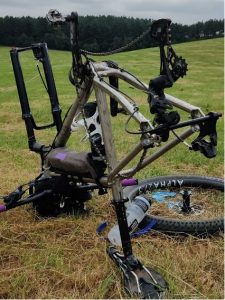
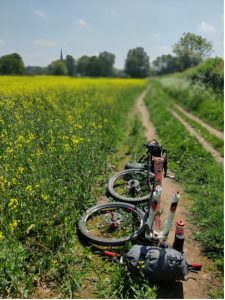 It’s useful to do practice this out on rides, when conditions aren’t perfect, when items can blow away or get lost in the grass. But doing this also brings confidence in your kit choices. You know that you’ll be warm enough in your sleeping system, have all the right tools to fix the majority of mechanicals you might face and stay warm and dry in whatever the weather conditions. It’s better to find out that something isn’t right before you set off, when you have time to re-proof those waterproofs or buy a longer handle allen key for that specific bolt. As the days pass and tiredness sets in, knowing that you’ve got everything to keep you moving really helps the mental game. I’ve written more about gear for a 2500km mountain biking adventure in the next blog.
It’s useful to do practice this out on rides, when conditions aren’t perfect, when items can blow away or get lost in the grass. But doing this also brings confidence in your kit choices. You know that you’ll be warm enough in your sleeping system, have all the right tools to fix the majority of mechanicals you might face and stay warm and dry in whatever the weather conditions. It’s better to find out that something isn’t right before you set off, when you have time to re-proof those waterproofs or buy a longer handle allen key for that specific bolt. As the days pass and tiredness sets in, knowing that you’ve got everything to keep you moving really helps the mental game. I’ve written more about gear for a 2500km mountain biking adventure in the next blog.
Wrap up
A few key takeaways that I’ve summarised from the above:
- Time in the saddle is great, but best to include alternative physical training specific to bike packing, such as lugging bikes over obstacles, negotiating gates.
- Test your mental game. Perhaps don’t go as far as slashing your own tyres in a torrential downpour after dark, but head out after long days at work, in darkness and bad weather. It all really helps.
- Become familiar with your kit, and where it’s packed. The most basic of tasks can take all your brainpower to complete, make sure getting your bivvy out is muscle memory.
- Test your gear before you go, so you know you can place all your confidence in it, that you’ve got the right equipment and it all works!
- Training variety is key. Endurance events are so much more than just a physical challenge. Get a coach who can provide bespoke plans, done similar events and knows what you’ll go through.
- Talk to others. I didn’t mention this in the main body, but getting to know others and finding nuggets of info help boost event confidence.
Jon has been coaching me for many endurance events and I love the knowledge, focus on athletes and variety of training sessions. If you’re looking at taking on a similar event and need some help in your training, why not head over to E3Coach and see what training plan they can tailor for you and your goals, whatever you’re thinking.
Thank you to everyone who has supported me on this journey so far. From Grangers for protecting me against the elements to all that have wished me luck (and called me mad). You can watch my (and the others’) progress of the Great British Divide on Maprogress or Dot Watcher. Let me know which events you’ve signed up to, and I’ll watch your dot in return!!
Want to follow the story? @andyd0dd, @grangersofficial, @e3coach, @greatbritishdivide

